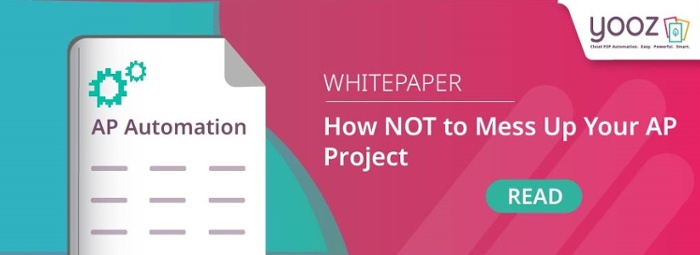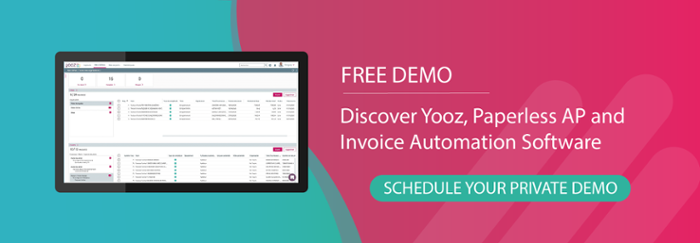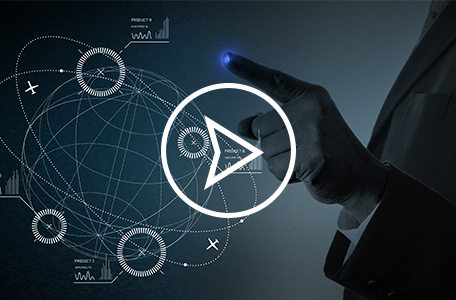Ask a dozen companies how they deal with handling, approving, and paying their invoices and, aside from hearing the words ‘manual’ and ‘automated’, you’ll mostly likely get a dozen different answers. That’s because there is no single, generally accepted definition of either the accounts payable process or of accounts payable automation Instead, companies often rely on accounting workflows that they cobbled together as they grew, expanded their geographical footprint, built out a more complex vendor network, or began embracing digital transformation.
However, there is agreement on one thing among the experts watching the space: an effective process requires several components and should follow a set of proven best practices to generate tangible benefits. This is especially true in the case of automation.
Before we explore exactly what comprises these accounts payable and invoice automation best practices, it is important to understand the overall accounts payable situation. Ardent Partners found in their “State of ePayables 2020” report that “…a majority of today’s accounts payable teams are not fully automated, but rather have taken more of a piecemeal approach… full automation is the exception, not the rule.” According to Ardent:
- Only 41% of businesses have complete procure-to-pay automation in place.
- Fewer than half of all accounts payable teams use e-invoicing, and
- An equally small number (43%) of companies have adopted electronic B2B payments.
It’s not for lack of trying. After all, accounts payable automation has been around for over 20 years and has markedly improved alongside the new technologies developed to deal with invoices. But, while it’s easy to be dazzled by innovations such as robotic process automation and artificial intelligence (and their promised impact), the basic questions underlying the actual accounts payable automation are often overlooked. Specifically, the steps that any business should take well in advance to ensure that they get the best return on their investment.
Accounts Payable Automation Starts with Doing Your Homework
When it comes to automation, Levvel Research perhaps best summed up the overall prevailing mood with results from the finance departments surveyed in its 2020 Payables Insight Report:
“One thing that stood out in this year’s study is that back-office professionals lack sufficient education on AP automation… Organizations – both automated and manual – are doing themselves a disservice by not conducting deeper exploration into the AP software marketplace.”
This is the reason why they recommend that organizations do their homework long before embarking on any accounts payable automation project. At the very least this should include checking for and compiling the main pain points, spelling out key questions or concerns, and then doing a vendor survey. The latter should focus on vendors with whom they can enter a partnership, including a lively information feedback loop with software providers that use their customers as a valuable resource to continuously improve their product.
Accounts Payable Automation Needs to Integrate with ERP Systems and Payment Providers
A key part of research is if the automation software under consideration will play nicely with other, existing tools. If not, a business could put a lot of effort into implementing something that costs rather than immediately saves money.
For example, Yooz seamlessly integrates with more than 250 types of financial and ERP software, from Sage Intacct and Intuit QuickBooks to Microsoft Dynamics GP and SAP. This existing integration makes the transition process as painless and quick as possible, with the system immediately able to automatically match an invoice to a purchase order and mark and entry as paid as soon as payment is initiated.
On the other end of the spectrum, an existing ability to play well with vendor or customer payment providers – whether through electronic checks, virtual cars, or reliance on electronic transfers – is another key service that should be considered.
Accounts Payable Automation Best Practices from Receiving to Paying Invoices
You’ve done your homework, you understand your needs and situation, now what? When trying to streamline your purchase-to-pay workflow best practices include focusing on three key areas:
- How invoices are received
- How invoices are validated and approved, and
- How payments are scheduled and executed
Here’s how Levvel summarizes accounts payable automation best practices when it comes to receiving and processing invoices:
“Invoice management solutions affect all levels of an organization. Invoice workflows that were once manual, sometimes requiring authorization via hand, email, or even stamp-to-paper approvals, are now managed by automated software. Instead of AP team members spending time tracking down the correct approver(s) for each invoice, an IWA solution automatically routes invoices to appropriate managers electronically, as well as sends notifications and reminders to prevent delays. These alerts and custom controls reduce the time necessary for middle and upper management to oversee approvals. Invoice management solutions also record entire workflow histories, which helps with auditing and identifying errors. Those at the C-suite level will see the cost savings resulting from reduced invoice approval times and increased early payment discount capture.”
Agile and Affordable: Automated Invoice Receiving Works Best in the Cloud
Invoices received is key because manual and paper-based processes are often the root cause for delays in approving invoices and payments for any size business. Because accounts payable clerks will open envelopes, collect e-mailed and faxed invoices, and enter all of the gathered information into their system – including GL coding – existing errors can go unnoticed or new ones occur. It can be as simple as a duplicate invoice or as complicated as incorrect amounts on an invoice.
Levvel concludes in its most recent report that “…cloud-based tools are dynamic, affordable, and flexible, offering technology that enables business agility.” A cloud system gives users of any size organization access to a constantly updated set of powerful tools. It saves physical space, maintenance, labor and all the associated costs. The cloud is also easily accessible from anywhere at any time.
Based on a broad customer base and millions of invoices, Yooz finds that businesses who embark on the cloud path can successfully get rid of paper: invoices to checks and everything in between. In return those same businesses can cut their processing costs and cycle time by 80%.
How many invoices do you send? How many thousands of dollars would accounts payable automation save you? Yooz offers a handy savings calculator so you can get down to actual dollars and cents per invoice processed.
A best practice here is to focus on automation that uses machine learning algorithms and optical character recognition (OCR) technology that can read and understand every invoice, word for word, amount for amount, quickly learning to differentiate between vendor invoices and even automatically split those submitted at one time in a single, large batch.
This type of technology achieves an outstanding degree of accuracy right out of the box and only gets better as it seems more documents, adding to a company’s body of knowledge about its finances. It also helps to efficiently grow and maintain quality relations throughout the vendor network via dedicated portals.
An additional best approach is the use of three-way invoice matching. By triple checking invoice data, a business reduces not just the risk of errors but also fraud.
E-payments and Dashboards make Accounts Payable Automation a Winner
As a result of implementing accounts payable and invoice automation best practices to streamline how invoices are received, the AP team is no longer tied up with manual data entry or chasing approval signatures for individual invoices. Instead, they can focus on high-value tasks such as submissions flagged for review including duplicates, incomplete, or fraudulent invoices.
The next steps in getting accounts payable right deals with approving and initiating payments. According to the Levvel report:
“ePayments solutions directly impact employees at the staff level by reducing the need for time-consuming tasks such as paper check processing. These solutions can handle payment reconciliation and data maintenance tasks, freeing up staff for other tasks. Mid-level and upper management staff see a great reduction in maverick spend, fraudulent payments, and security concerns that result from less controlled payment methods like checks. C-suite professionals can strategically manage payments and optimize cash flow and see bottom-line improvements from reduced costs and from higher rebate capture through commercial card use.”
With the analytical tools that come with automation, the entire organization will see a real-time dashboard customized for their roles and permissions. This kind of easily accessed financial intelligence goes far beyond just tracking invoices, benefitting departments across the entire business. Efficiency and productivity receive a boost the entire way down the value chain.
What does this really mean? ROI comes in many forms: reduced time and money spent on filing and storing invoices, no lengthy hunting for a specific document for review, centralized data for easy preparation for any kind of audit. Instead of all this, a simple keyword search can bring up any entry from any invoice (much like performing a browser search). The same level of granularity handling payable invoices also works on a mobile device.
Consider once again Levvel’s take of what’s achievable courtesy of automation:
“Reporting and analytics tools benefit users at all levels in an organization but are particularly useful for administrators and decision-makers with more strategic tasks and goals. Reports summarize spend activity and help managers and the C-suite to identify spending trends, optimize spend policies, and improve efficiency… The insights generated by advanced reporting and analytics tools aid C-suite professionals in targeting trouble spots and provide a holistic overview of the organization’s cash flow.”
When it comes to accounting, money talks.
End to End Best Practices
Rigorously doing your research and then incorporating the right automation processes can help a business avoid errors and bottlenecks. A solid process to achieve true accounts payable automation lives in the cloud and gives its users access to a constantly updated set of powerful tools, regardless of the business size.
Yooz is the rare platform that gets the highest grades from both Ardent Partners and Levvel Research for embodying all accounts payable software best practices. With a holistic approach of an end-to-end cloud platform, from ERP integration to the most advanced intelligent machine learning and OCR technology to a strong growing network of partnerships, the Yooz platform is on the solution shortlist for anybody researching and doing a cost analysis on the best accounts payable automation.







